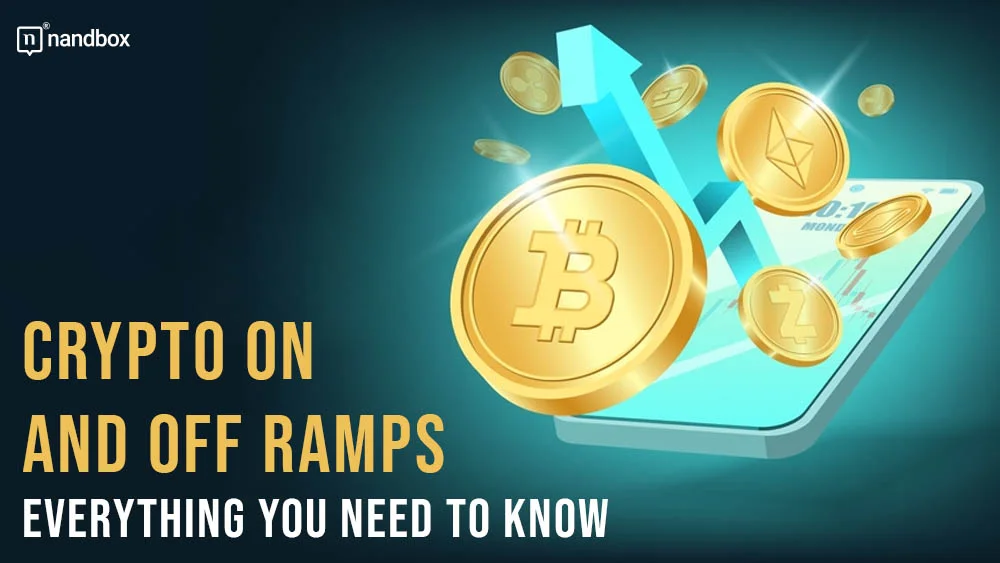As cryptocurrencies continue to gain traction in the financial world, understanding the mechanisms for converting between fiat currency and digital assets is crucial. This process involves on- and off-ramps, facilitating the entry and exit points for cryptocurrency transactions. In this article, we will explore ramp crypto payments, the various forms they take, and their significance in the cryptocurrency ecosystem.
What Is Crypto on Ramp?
A cryptocurrency on-ramp is a service or platform that allows users to convert fiat currency, such as USD or EUR, into cryptocurrencies like Bitcoin. On-ramps are essential for new users entering the cryptocurrency market. They provide the means to purchase digital assets using traditional money. For users looking to convert their digital assets back to fiat currency, converting ETH to USD is a common off-ramp process, providing liquidity and real-world usability for Ethereum holders.
These services ensure that users can seamlessly transition from conventional financial systems to decentralized ones. The most common exchanges are USD to BTC, USD to ETH and USD to SOL.
For instance, a new investor might use a centralized crypto exchange platform to transfer funds from their bank account and purchase BTC. This process not only provides easy access to the world of cryptocurrencies but also offers a user-friendly interface. This interface simplifies the often complex process of buying digital assets for those unfamiliar with the technology. By bridging the gap between fiat and crypto, on-ramps play a crucial role in fostering broader adoption and integration of cryptocurrencies into everyday financial activities.
Forms of Crypto On-Ramping
On-ramp solutions come in several forms:
- Centralized exchanges are the most common forms of crypto on-ramps. They allow users to deposit fiat currency through bank transfers, credit cards, or other payment methods and exchange it for various cryptocurrencies. These platforms often implement robust security measures, including Anti-Money Laundering (AML) protocols, to ensure compliance with regulatory standards.
- Brokerage platforms such as eToro and Robinhood also offer cryptocurrency on-ramp services. These services are user-friendly and meet the needs of individuals who may be less familiar with the intricacies of cryptocurrency trading. Brokers handle the purchase and storage of cryptocurrencies on behalf of their clients, simplifying the process.
- Some payment processors, including PayPal and Square, have integrated cryptocurrency on-ramping features into their platforms. Users can buy, sell, and hold crypto directly within these apps, making it convenient for those who already use these services for other financial transactions.
- P2P platforms provide an alternative method for on-ramping. Such platforms connect buyers and sellers directly, allowing users to purchase cryptocurrencies from other individuals. Transactions can be completed using various payment methods, providing flexibility and often reducing the need for intermediaries.
- Non-fungible token (NFT) marketplaces are another form of crypto on-ramping. Platforms such as OpenSea allow users to purchase NFTs using fiat currency, effectively introducing them to the world of cryptocurrencies. By engaging in NFT transactions, users often gain exposure to various digital assets and the broader blockchain ecosystem.
What Is Crypto Off Ramp?
An off ramp crypto is a service that allows users to convert their digital assets back into fiat currency. Off-ramps are useful for those who wish to realize their gains from cryptocurrency investments or need to convert their holdings into cash for everyday use. These services bridge the gap between the digital and traditional financial worlds, providing liquidity and usability to cryptocurrency holders.
Forms of Crypto Off-Ramping
On-ramp and off ramp services often have the same forms:
- Exchanges. Just as they serve as crypto on ramps, centralized exchanges also function as off-ramps. Users can sell their cryptocurrencies on these platforms and withdraw the proceeds to their bank accounts. The process typically involves transferring digital assets to the exchange, executing a sell order, and then withdrawing the fiat currency.
- Crypto ATMs. Crypto ATMs are physical machines that allow users to exchange cryptocurrencies for cash. These ATMs are available in various locations worldwide and provide a convenient way for individuals to convert their digital assets without needing a bank account or exchange account.
- P2P platforms facilitate direct transactions between buyers and sellers. Users can sell their cryptocurrencies directly to other individuals and receive payment in fiat currency. This method often provides more flexibility and can be used in regions where other off-ramping options are limited.
- Crypto debit cards provide another form of off-ramping. These cards allow users to spend their cryptocurrencies directly at merchants that accept debit card payments. When a purchase is made, the equivalent value in cryptocurrency is converted to fiat currency and deducted from the user’s account. This seamless integration allows users to utilize their digital assets for everyday transactions without the need to first convert them to cash.
Conclusion
Understanding on- and off-ramp crypto services is fundamental for anyone participating in the cryptocurrency market. These services provide the necessary infrastructure for converting between fiat currency and digital assets. They enable broader adoption and usability of cryptocurrencies. Whether through exchanges, brokerage services, payment processors, ATMs, or p2p platforms. The availability of diverse on- and off-ramp options ensures that users have multiple options to manage their crypto investments efficiently.




